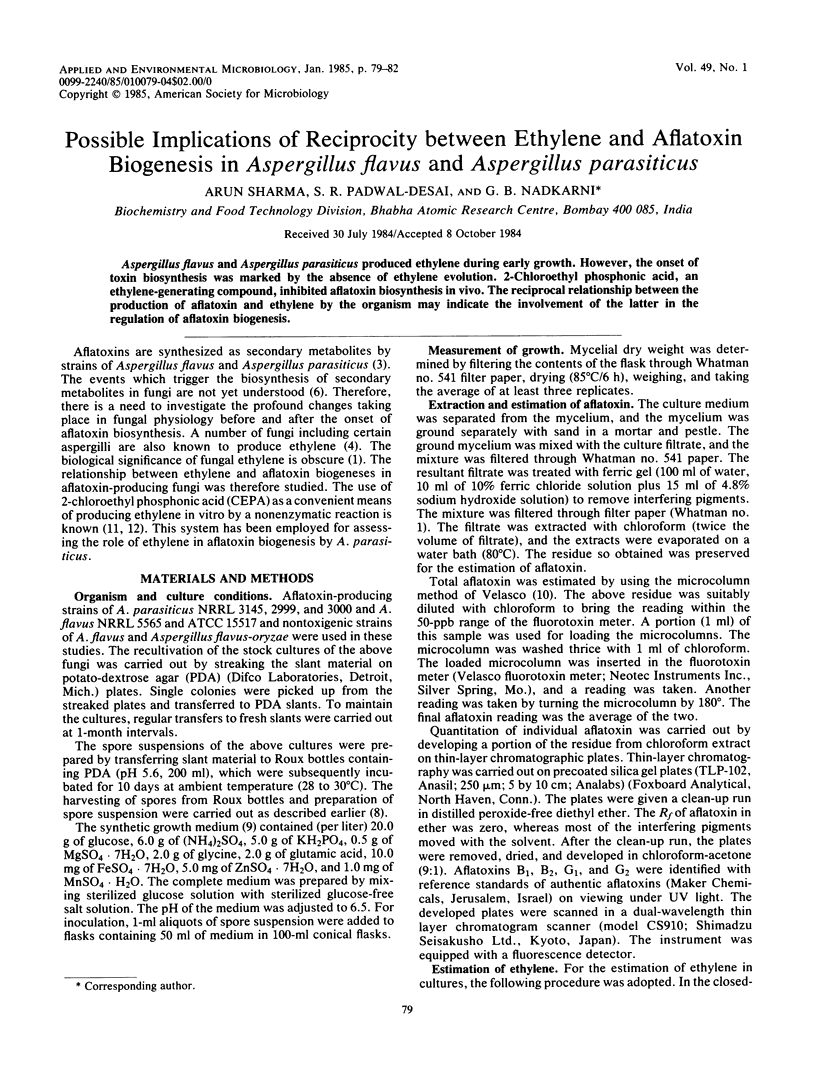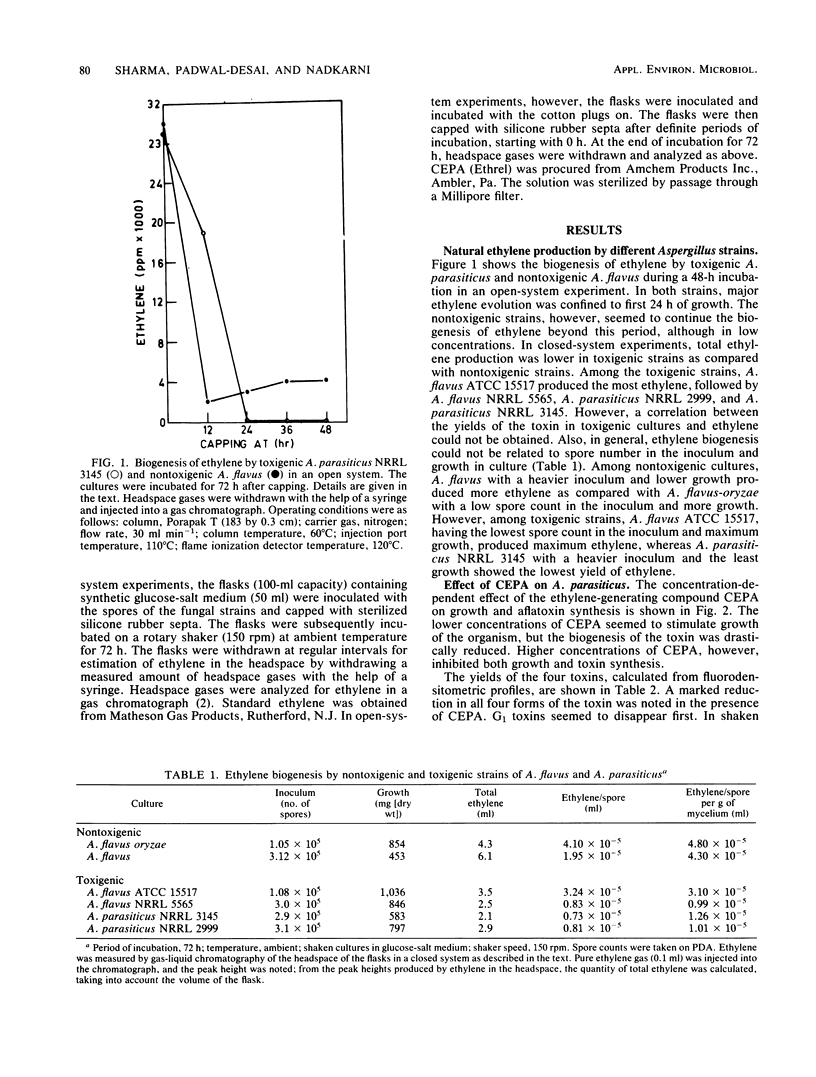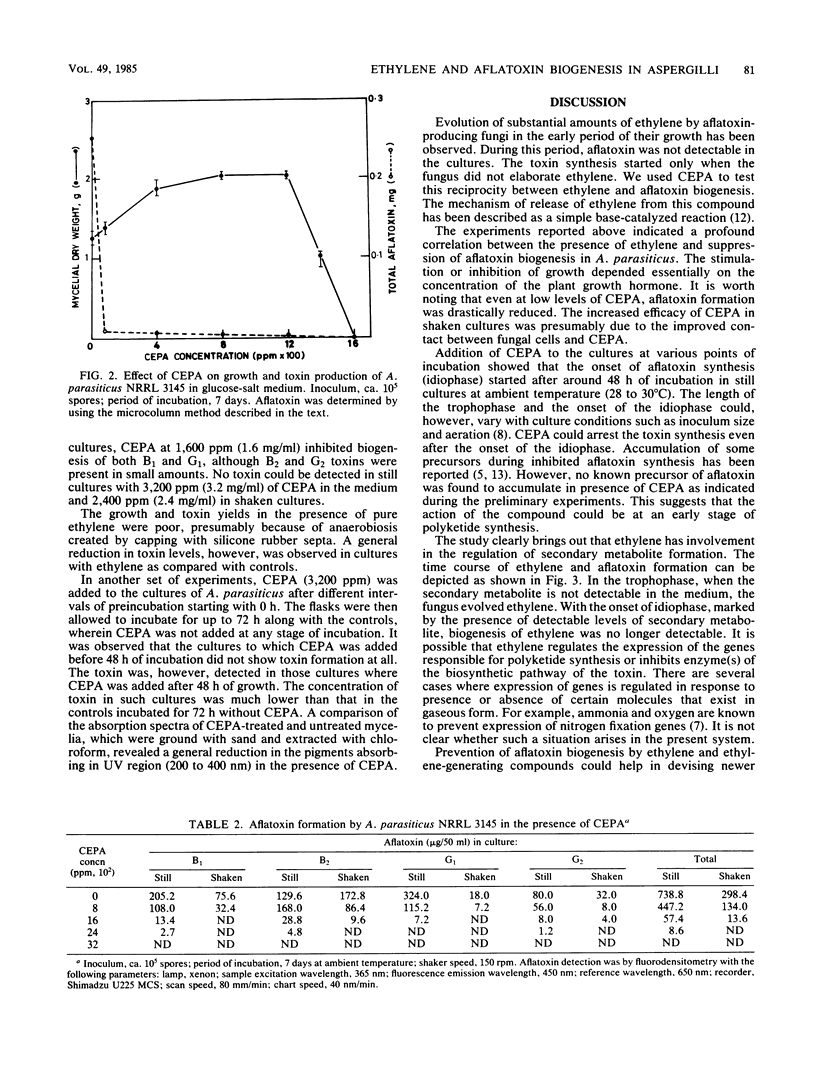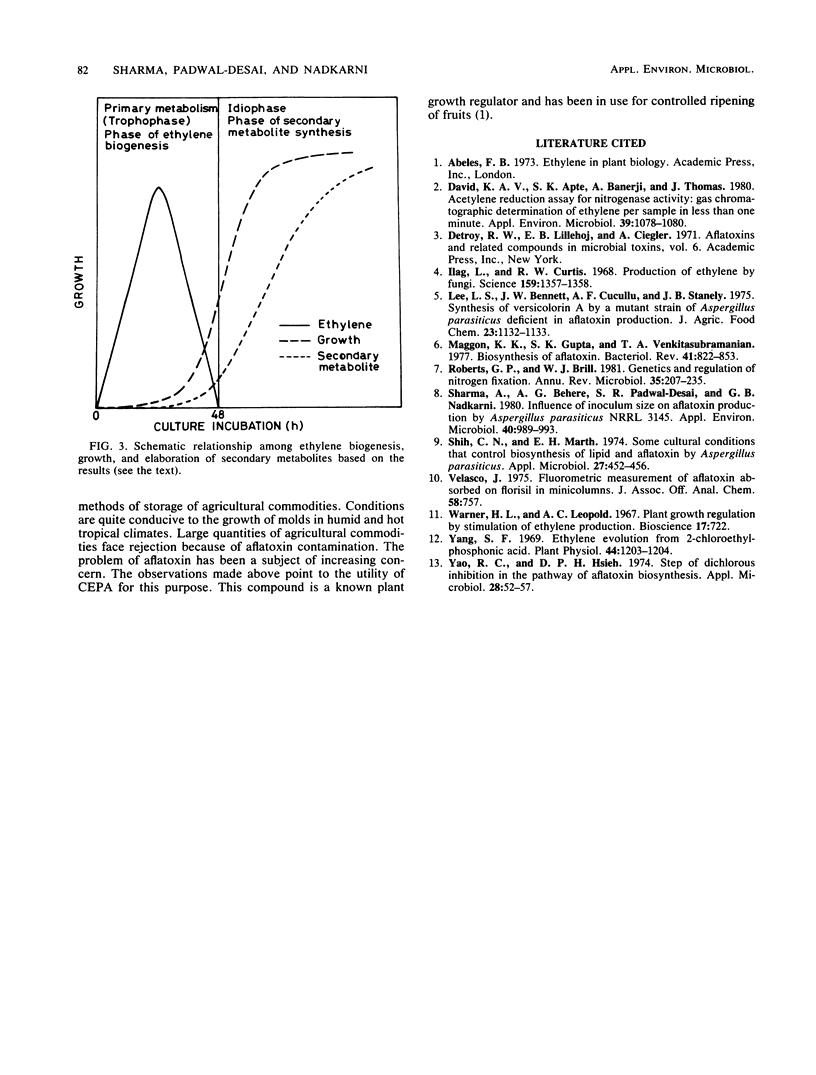Abstract
Aspergillus flavus and Aspergillus parasiticus produced ethylene during early growth. However, the onset of toxin biosynthesis was marked by the absence of ethylene evolution. 2-Chloroethyl phosphonic acid, an ethylene-generating compound, inhibited aflatoxin biosynthesis in vivo. The reciprocal relationship between the production of aflatoxin and ethylene by the organism may indicate the involvement of the latter in the regulation of aflatoxin biogenesis.
Full text
PDF



Selected References
These references are in PubMed. This may not be the complete list of references from this article.
- David K. A., Apte S. K., Banerji A., Thomas J. Acetylene reduction assay for nitrogenase activity: gas chromatographic determination of ethylene per sample in less than one minute. Appl Environ Microbiol. 1980 May;39(5):1078–1080. doi: 10.1128/aem.39.5.1078-1080.1980. [DOI] [PMC free article] [PubMed] [Google Scholar]
- Ilag L., Curtis R. W. Production of ethylene by fungi. Science. 1968 Mar 22;159(3821):1357–1358. doi: 10.1126/science.159.3821.1357. [DOI] [PubMed] [Google Scholar]
- Lee L. S., Bennett J. W., Cucullu A. F., Stanley J. B. Synthesis of versicolorin A by a mutant strain of Aspergillus parasiticus deficient in aflatoxin production. J Agric Food Chem. 1975 Nov-Dec;23(6):1132–1134. doi: 10.1021/jf60202a011. [DOI] [PubMed] [Google Scholar]
- Maggon K. K., Gupta S. K., Venkitasubramanian T. A. Biosynthesis of aflatoxins. Bacteriol Rev. 1977 Dec;41(4):822–855. doi: 10.1128/br.41.4.822-855.1977. [DOI] [PMC free article] [PubMed] [Google Scholar]
- Roberts G. P., Brill W. J. Genetics and regulation of nitrogen fixation. Annu Rev Microbiol. 1981;35:207–235. doi: 10.1146/annurev.mi.35.100181.001231. [DOI] [PubMed] [Google Scholar]
- Sharma A., Behere A. G., Padwal-Desai S. R., Nadkarni G. B. Influence of inoculum size of Aspergillus parasiticus spores on aflatoxin production. Appl Environ Microbiol. 1980 Dec;40(6):989–993. doi: 10.1128/aem.40.6.989-993.1980. [DOI] [PMC free article] [PubMed] [Google Scholar]
- Shih C. H., Marth E. H. Some cultural conditions that control biosynthesis of lipid and aflatoxin by Aspergillus parasiticus. Appl Microbiol. 1974 Mar;27(3):452–456. doi: 10.1128/am.27.3.452-456.1974. [DOI] [PMC free article] [PubMed] [Google Scholar]
- Velasco J. Fluorometric measurement of aflatoxin adsorbed on florisil in minicolumns. J Assoc Off Anal Chem. 1975 Jul;58(4):757–763. [PubMed] [Google Scholar]
- Yang S. F. Ethylene evolution from 2-chloroethylphosphonic Acid. Plant Physiol. 1969 Aug;44(8):1203–1204. doi: 10.1104/pp.44.8.1203. [DOI] [PMC free article] [PubMed] [Google Scholar]
- Yao R. C., Hsieh D. P. Step of dichlorvos inhibition in the pathway of aflatoxin biosynthesis. Appl Microbiol. 1974 Jul;28(1):52–57. doi: 10.1128/am.28.1.52-57.1974. [DOI] [PMC free article] [PubMed] [Google Scholar]


